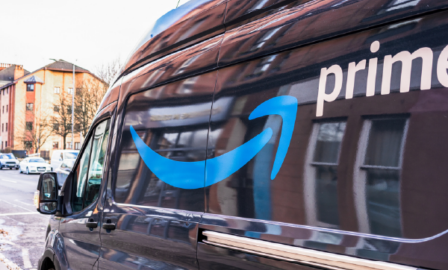What Type of Customer Attribution Model is Best for Your Business?
As more brands look to enhance their go-to-market strategy, customer attribution has become an essential part of determining marketing effectiveness and return on ad spend. Customer attribution uses a mix of tracking elements to break down the customer’s journey along a conversion funnel to the brand’s conversion event. Understanding this conversion path allows brands to focus on truly meaningful touch points that can sway the customer’s decisions to go deeper down the funnel or abandon completely.
But what is the right way to look at customer attribution? Brands have been looking to solve this question for years to understand how to best allocate capital across their marketing programs and drive growth. The truth is simple: it depends.
To determine the best way to view marketing attribution, first the business needs to decide on an attribution model that can best navigate its customers’ conversion path. There are multiple types of attribution models that businesses can decide are best for their needs.
Types of Customer Attribution
Customer attribution modeling can take many forms depending on the needs of the business. Some are simpler, only considering a single touch point in the conversion path, while others can include multiple touch points along with conversion path with varying conversion credit assigned.
Single-Touch Attribution
Single touch attribution describes attribution models that only focus on one touchpoint within the marketing funnel and conversion path.
Last-Click Attribution
Last click is often the first attribution model an organization uses. It assigns the full conversion credit to the last click in the consumer’s journey before the conversion event. For example, a user clicks on two social ads, then clicks on a search engine marketing ad, and then purchases a product. The search engine ad would then receive 100% of the conversion credit.
This is best for companies that are just starting out in their marketing and are looking to focus capital allocation into driving specific conversion behaviors. However, this strategy discounts the full funnel of a consumer’s journey, ignoring the impact of all the touchpoints that could have influenced the purchase decision. Last click also heavily discounts upper funnel channels that increase brand awareness and help drive consumers to lower funnel channels and their eventual purchase.
First-Click Attribution
Like last click, first click assigns the conversion to the first click in the consumer’s journey to the conversion event. For example, if a user clicks on a programmatic ad, then two social ads, then converts using an SEO link, the full conversion credit goes to the programmatic ad.
First-click attribution, similar to last click, only accounts for a single touchpoint along the customer’s journey. While last click emphasizes the touchpoint closest to the conversion event, first click emphasizes the touchpoint at the beginning of the conversion event or upper funnel tactics. This can be beneficial for businesses looking to drive their brand awareness efforts rather than focusing on driving lower funnel conversions.
Multi-Touch Attribution
Multi-touch attribution describes attribution models that focus on multiple touchpoints within the marketing funnel and conversion path.
Linear Attribution
Linear attribution assigns each touchpoint with the same conversion credit along the conversion path. For example, if a user clicks on one display ad, a social ad and then an SEM ad before converting, each channel would receive 1/3 of the conversion credit for that conversion.
Linear attribution can be great for companies that are trying to move from a single-touch attribution model to multi-touch attribution. Businesses with fewer marketing channels or shorter steps within their marketing funnel can benefit from a linear model. A limitation of this model is that it underweights the most impactful touch points along the customer journey and could overweight the least impactful touch points as well.
Time Decay
Time decay assigns a higher percentage of the conversion credit to touchpoints that engaged closer to the conversion point rather than those earlier on in the conversion path. An example of this would be if a user clicked on a display ad on day zero, a SEM ad on day two, and then converted via a native ad on day five, the native ad would receive the majority of the conversion credit relative to the SEM ad and display ad.
Time decay can be beneficial for businesses that want to value multiple touchpoints within the marketing funnel but want to emphasize touchpoints that are closer to the conversion event, thus driving a greater share of business impact. While this model can be great for understanding longer marketing funnels, it can often underweight upper funnel tactics that plant the seed for the downstream conversion event.
Position-Based (U-Shaped) Attribution
Position-based, or often referred to as “U-Shaped,” attribution assigns conversion credit to the first and last touch points along the conversion path. The math is simple. Forty percent of the conversion credit is allocated to the first touch point while another 40% is allocated to the last touch point. The remaining 20% of the conversion credit is equally broken between the remaining touch points within the conversion path. An example of this is a user clicks on four ads before converting on a site. The first and last channel would receive 40% of conversion credit each, while the second and third channels would receive 10% of conversion credit each.
Position-based attribution is great for assigning conversion credit to all touch points along the conversion path while emphasizing what most consider to be the most impactful touch points.
Moving Forward with Your Customer Attribution Model
Understanding the customer’s journey along the conversion path can be tricky, but ultimately can have some of the largest impacts on marketing effectiveness. While there is no “one size fits all” approach, deciding on a customer attribution model that closely aligns with a business’ needs can greatly enhance marketing effectiveness and capital allocation between channels.



